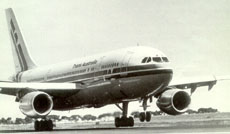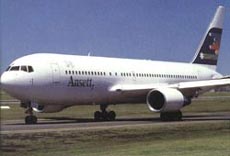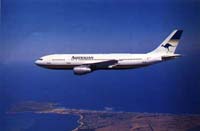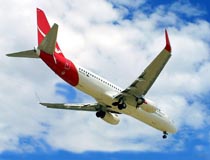Need for Deregulation
The Two Airline Policy was marginally relaxed with "the Airline deregulation Act of 1978" which was a new form of regulation, developed to deal with aircraft movement problems, such as the allocation of the limited number of slots available at airports, and to cater for the increasing international and domestic aircraft movements.
With the newer 'open skies' policy of the government, TAA were in October 1981 able to introduce the then huge Airbus A300B4 and this 'chink in the armour of the two airline policy' introduced a new era in Australian aviation.

The A300B4 was a revolutionary aircraft at the time for the domestic airline industry, in that it was a wide-body (twin aisle) aircraft, designed for short haul operations and provided significant extra capacity on the east coast trunk network and to Perth.
It had also the ability to handle much of the load the Boeing 747 carried, and in the same stowage arrangement configuration, making it totally compatable with overseas carriers. This fact allowed overseas carriers to negotiate with TAA for all the freight on carriage using their sealed containers, and TAA gained additional patronage for this aircraft.

At this time Ansett elected to purchase the Boeing 767 aircraft for their fleet expansion.

In 1986, Trans Australia Airlines was controversially re branded as 'Australian Airlines', and although it was only the name that changed, that old 'Fly the Friendly Way' attitude was exchanged for a modern efficient image, driven to ensure that it would be ready in the future for privatization.
By the end of the 1980s, it was evident the Two-Airline policy had outlived its usefulness and a radical shake-up of the industry was undertaken. This change was expedited when in 1989 the pilot dispute ensured a new regime would be established, when the 'en masse' resignation of aircrew occurred and the structure changed forever.
The early 1990s were the dying years for TAA/Australian as the government directed that QANTAS and AUSTRALIAN would merge and that the now government owned utility would be sold to private enterprise.

Ansett, now a privately owned consortium was to be unaffected and retained its position in the AUSTRALIAN marketplace.
The airline that with Ansett had competed in domestic skies for over 45 years was no more when the government made its announcement to privatise the international and domestic networks under the brand name QANTAS - The Australian Airline, (they still retained TAA in the brand name) and in less than ten years Ansett would collapse as a result of management changes resulting from inappropriate management decisions, the skies were free of all the old controls that made AUSTRALIA'S AVIATION SYSTEM UNIQUE IN AVIATION HISTORY.
Open Skies policy
Open Skies agreements between the US and Australia (and other countries) opened the aviation market to foreign access and removed barriers to competition, giving airlines equal rights to operate air services from any point to any point in the other country, as well as to and from third countries.
Initially this applied to international airlines and operations to and from Australia, but in 1990, Compass applied for, and received, permission to enter the market, and was Australia's first low cost airline.
Previously the two airline policy was a legal barrier to new entrants to the Australian aviation market, but this no longer applied, and hence, Compass Mk I, (as it later became known), was established by Bryan Grey, who had previously been General Manager of a regional airline - East-West Airlines.
East-West Airlines, located in country New South Wales, servicing Sydney and regional centres within the state had earlier attempted to break the duopoly of Ansett and Australian Airlines (originally TAA) by offering cheap fares, but in the regulated environment of the time, it was not allowed to operate directly between major cities, so EWA was forced to detour via regional centres.
East-West was ultimately taken over by Ansett.